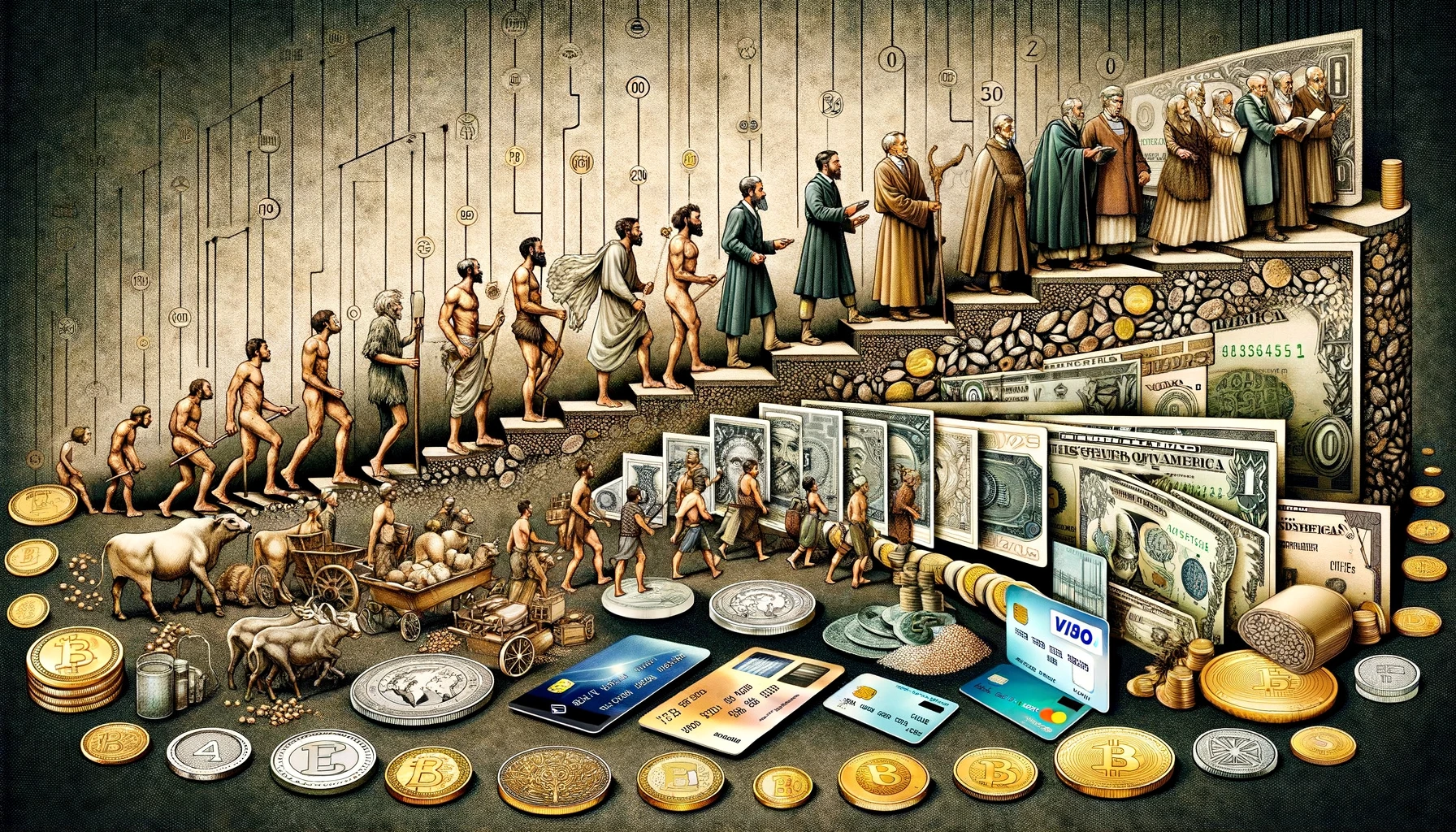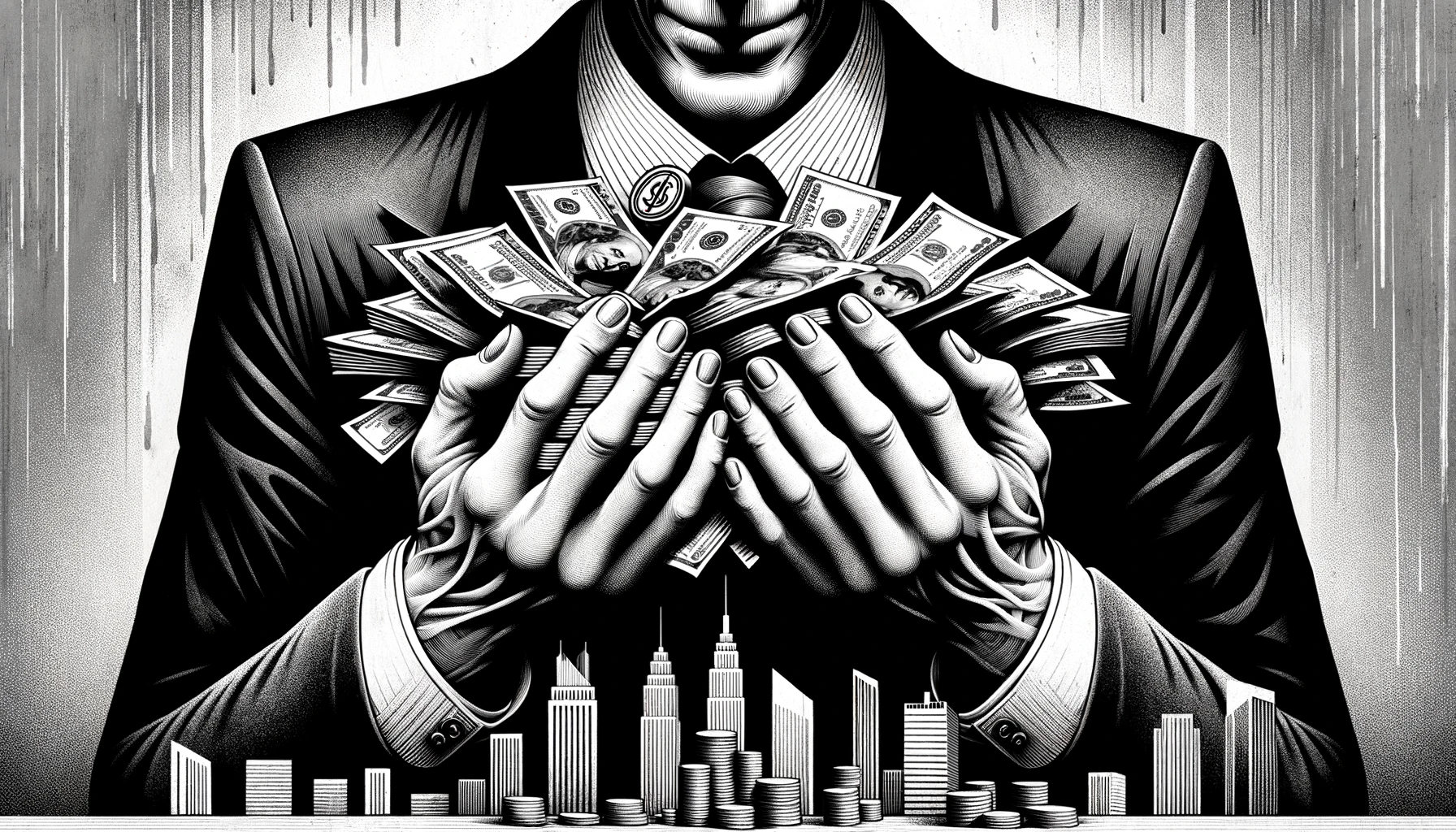- Published on
What is Money and How Does It Work?
- Authors

- Name
- Jesús Herman

What Exactly Is Money?
This is a question I've spent a large part of my life asking myself. The curious thing is that, in general, when I've asked my parents, relatives, or friends this, they haven't been able to give me an answer that makes much sense.
Let's take it step by step. The first thing to understand is that, in essence, money represents value. If I do a job for you, you give me money in exchange for the value I've provided to you. I can then use that money to obtain something of value from someone else in the future.
Throughout history, value has taken many forms, and people have used many different materials to represent money. Salt, wheat, shells, and, of course, gold have been used as a medium of exchange. However, for something to represent value, people have to trust that it is genuinely valuable and that it will remain so long enough to be exchanged in the future.
Until about a hundred years ago, we always trusted that "a thing" represented money. But something happened along the way, and we've gone from trusting a "thing" to trusting someone.
Let me explain.
Paper Money
Over time, people found it too cumbersome to walk around the world carrying gold bars or other forms of money, so paper money was invented.
Here's how it worked:
A bank or government offered to take possession of your gold bar, let's say worth 1000 euros. In exchange, that bank would give you certificates of receipt, which we call banknotes, worth 1000 euros. These pieces of paper were not only much easier to carry, but you could spend one euro on a cup of coffee and didn't have to cut your gold bar into a thousand pieces. And if you wanted your gold back, you simply took 1000 euros in banknotes to the bank to exchange them for the real form of money, in this case, that gold bar, when you needed it...
And so, paper began its use as money as an instrument of practicality and convenience. However, over time, and due to macroeconomic changes, this link between the paper receipt and the gold it represents was broken. Now, explaining the path that led us away from the gold standard is extremely complex, but suffice it to say that governments told their people that the government itself would be responsible for the value of that paper money.
Fiat Money 😮
From one day to the next, someone brilliant came up with the idea of saying, "Let's forget about gold and trade with paper." So people continued trading with receipts that are backed by nothing more than the government's promise. And why did it keep working? Because of trust.
Even though there is no commodity backing the paper money, people trusted the government, and that is how fiat money was created. Fiat is a word that comes from Latin and means "by decree". It means that dollars, or euros, or any other currency, have value because the government mandates it. This is known as "legal tender": coins or notes that must be accepted if offered as payment. The value of today's money comes from a legal status granted to it by a central authority, in this case, the government. So the trust model has changed, going from trusting something to trusting someone—in this case, the government.
The Drawbacks of Fiat Money
Fiat money has two main drawbacks:
- It is centralized: It has a central authority that controls and issues it. In this case, the government or the central bank.
- It is not quantity-limited: The government, through the central bank, can print all it wants when it needs to and inflate the money supply in the market.
The problem with printing money is that by flooding the market with more money, the value of each euro or dollar decreases, so the money itself is worth less. When you see prices rising over the years, it's not necessarily that prices are going up, but rather that the purchasing power of your money is falling. More dollars are needed to buy something that previously "cost less".
Once fiat money was underway, the step to digital money was quite simple. We already have a central authority that issues money, so why not make the money mostly digital and let that authority keep track of who owns what? Today we mainly use credit cards, bank transfers, PayPal, and other forms of digital money. The amount of physical money in the world is almost insignificant and decreases with each passing year.
So, if money today is digital, how does it work? That is, if I have a file that represents a dollar, what stops me from copying it a million times and having a million dollars? This is called the "double-spending problem".
The Double-Spending Problem
The solution that banks use today is a "centralized" solution; they keep a ledger on their computer that keeps track of who owns what. Everyone has an account, and this ledger keeps a count of every account. We all trust the bank, and the bank trusts its computer, so the solution is centralized in this ledger on this computer.
You may not know it, but there were many attempts to create alternative forms of digital currencies; however, none succeeded in solving the double-spending problem without a central authority.
Power and Money

Whenever you give someone control over the money supply, you are giving them enormous power, and this creates three major problems:
Corruption
The first problem is corruption; power corrupts, and absolute power corrupts absolutely. When banks are mandated to create money, or value, they basically control the flow of value in the world, which gives them nearly unlimited power. A small example of how power corrupts can be seen in the Wells Fargo scandal, where employees secretly created millions of unauthorized bank accounts and credit cards to inflate the bank's revenue stream, without their customers knowing for years.
Mismanagement
The second problem with a centralized system is mismanagement. If the interests of the central authority are not aligned with those of the people it controls, a case of money mismanagement can occur. For example, printing a lot of money to save a particular bank or institution from collapse, as happened in 2008.
The problem with printing too much money is that it causes inflation and basically erodes the value of citizens' money. An extreme example of this is Venezuela, where the government has printed so much money, and its value has fallen so much, that people no longer count the money but weigh it.
Control Over Your Money
The last issue is control. You are essentially giving up all control of your money to the government or the bank. At any time, the government can decide to freeze your account and deny you access to your funds. Even if you only use cash, the government can cancel the legal status of your currency, as was done in India a few years ago.
This was the situation until 2009. Creating an alternative to the current monetary system seemed like a lost cause. Until Bitcoin appeared. But I'll talk about that another time...